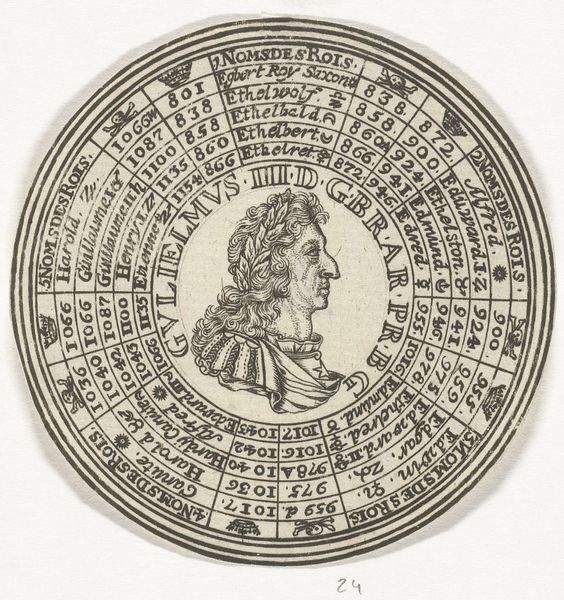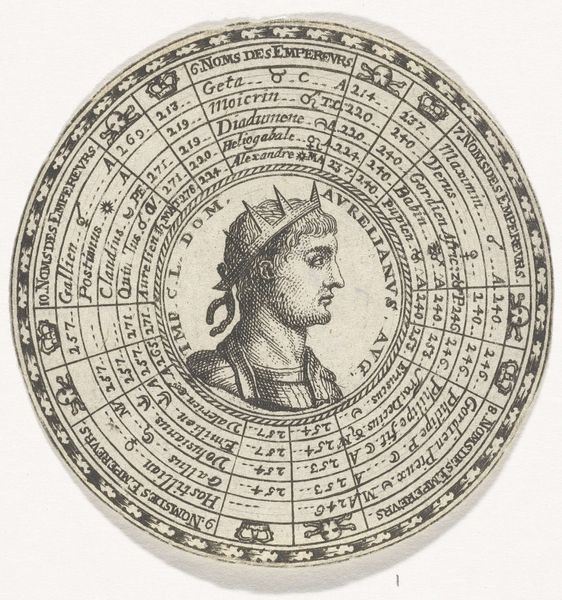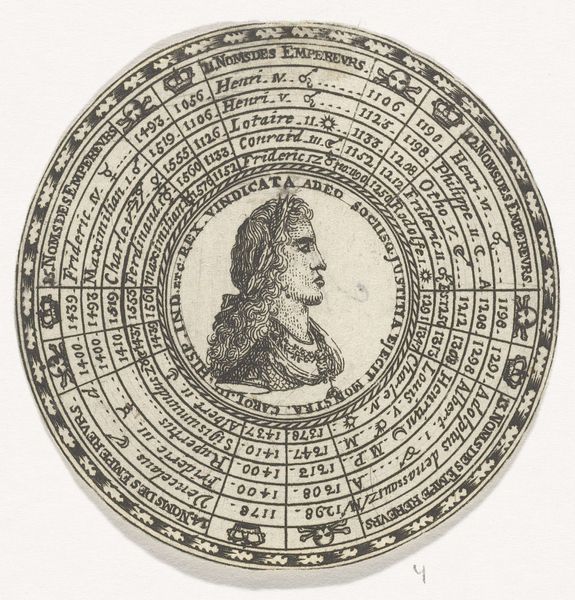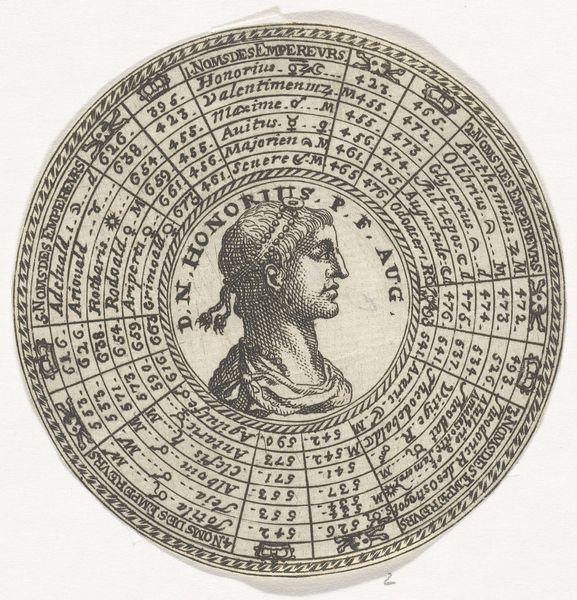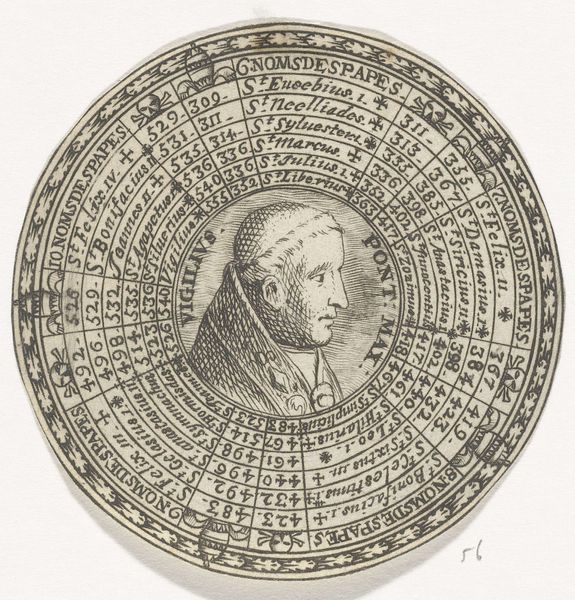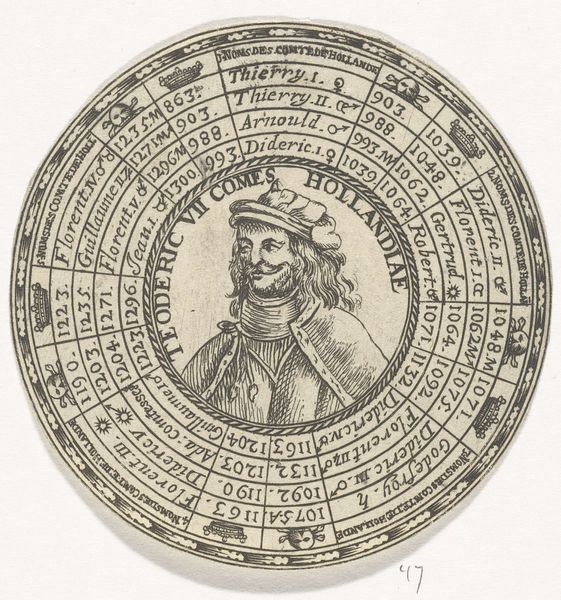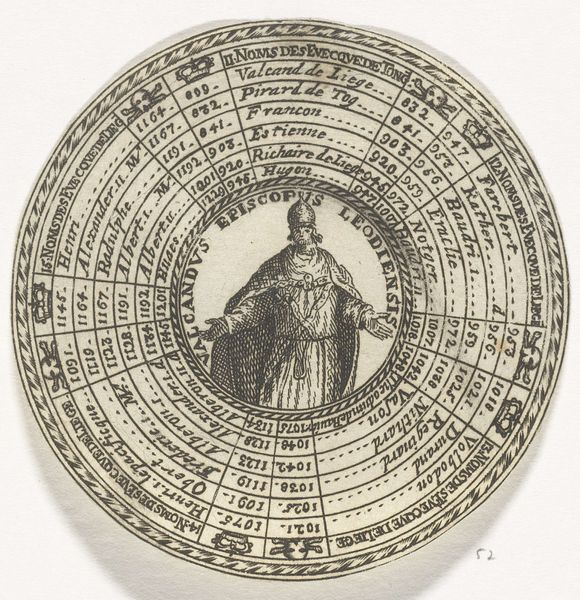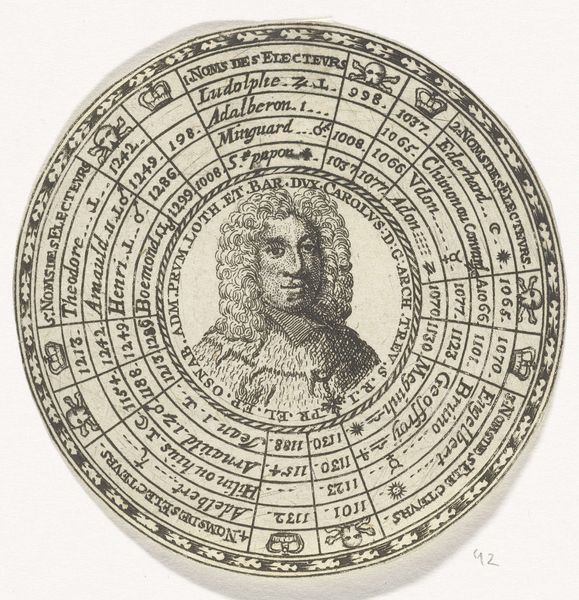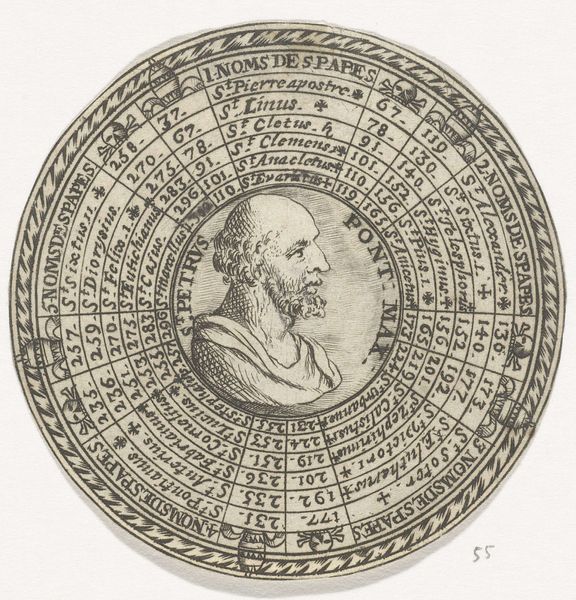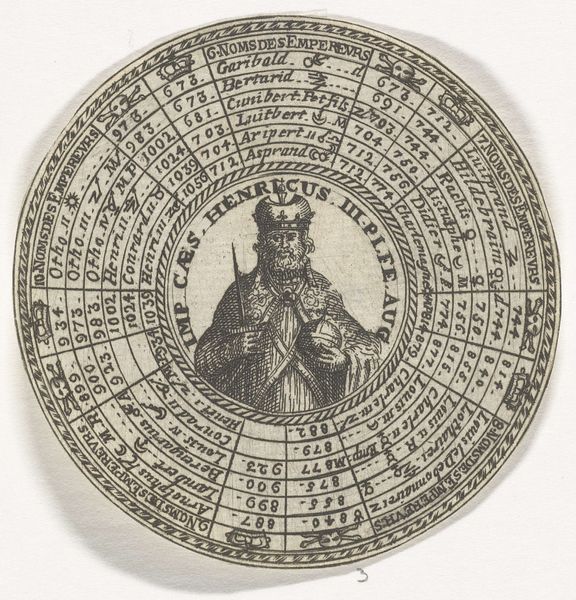
drawing, print, engraving
#
portrait
#
drawing
#
byzantine-art
#
medieval
# print
#
old engraving style
#
engraving
Copyright: Rijks Museum: Open Domain
Editor: So, this print is titled "Penning met het portret van Leo III en met de namen van Oost-Romeinse keizers" which translates to "Medal with the portrait of Leo III and with the names of Eastern Roman Emperors", dating back to 1712. It's an engraving. It's so intricate; I’m struck by how much information is packed into this small circular format. What historical context is crucial to understanding the imagery and purpose of this print? Curator: A very insightful observation about the circular format—think about what a coin or medal *represents*. This print doesn't just depict Leo III; it also presents a lineage of Eastern Roman Emperors, meticulously organized with dates. Given its creation in 1712, several centuries after the Byzantine Empire’s fall, this piece speaks to a contemporary fascination with and interpretation of Byzantine history. Considering this historical distance, what political or cultural purpose might such a representation serve? Editor: Maybe it's an attempt to legitimize current rulers or establish connections to a powerful past? Or perhaps it was purely an academic interest, a historical record for scholarly use? Curator: Exactly! The impulse to connect to powerful lineages is central here, but for *whom*? In 1712, historical claims could be very actively political, even across different countries or empires. Editor: That’s fascinating. So, it's less about a neutral historical record and more about how history itself was being used as a tool? I hadn't considered how the act of creating this 'historical' artwork is a product of *its* time, with its own biases. Curator: Precisely! By carefully selecting which emperors to include and how to present them, the creator asserts a specific narrative. The print becomes a historical argument made visual. What has stood out to you in the process of examining the art and its context? Editor: I see now that art doesn’t exist in a vacuum. Understanding its historical context, the potential motives, gives it an entirely new, richer dimension. Thanks for pointing me in that direction!
Comments
No comments
Be the first to comment and join the conversation on the ultimate creative platform.
